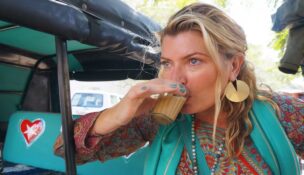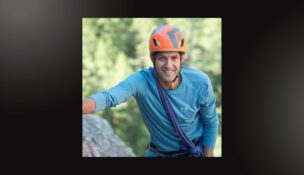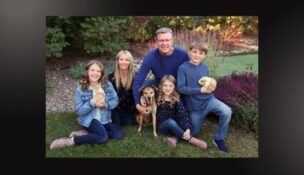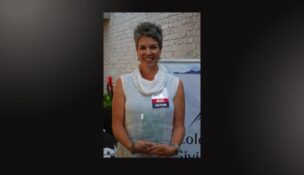The 2020 CEO of the Year: Kurt Culbertson
Chairman and CEO, Design Workshop | designworkshop.com | Aspen, Denver and other locations
Eric Peterson //November 20, 2020//


The 2020 CEO of the Year: Kurt Culbertson
Chairman and CEO, Design Workshop | designworkshop.com | Aspen, Denver and other locations
Eric Peterson //November 20, 2020//
Kurt Culbertson, a Louisiana native, says “roaming around in the woods” as a kid led him to his career in landscape architecture.
“I grew up on 16 acres, north of Shreveport,” says Culbertson, 68. “It was good to find a profession that allowed me to keep doing what I did as a kid.”
Culbertson went on to study at Louisiana State University, or “the Harvard of the South,” he says. He started in architecture, and then Robert S. Reich, a professor of landscape architecture, caught Culbertson’s attention in a big way. “If he was so excited about it, I wanted to be part of it,” Culbertson laughs. “He taught me by the way he lived his life, this profession is not a job, it’s a calling.”
Later pursuing his MBA at Southern Methodist University in Texas in the mid-1970s, Culbertson worked for the parks department in Fort Worth. “I ended up designing 14 playgrounds in low-income neighborhoods of color,” he remembers. “I ended up doing all of the design and construction and community engagement.”
In 1979, Culbertson moved to Aspen to work for Design Workshop based on a reference from Reich. His first assignment: Owl Creek ski area between Snowmass and Aspen that was never built. When the plan he stayed with the company when Aspen Skiing Company called with another project at a resort in Canada.
A business plan emerged. “We would work where the world’s money played,” he says. “We worked for most of the major ski resorts in North America, and every continent now except North America.”
Now 130 employees, Design Workshop has worked on projects at such marquee ski resorts as Winter Park, Keystone, Copper Mountain and Snowmass. “If you’ve skied in Colorado, you’ve been touched by our work,” Culbertson says.
Spurred by an expansion into master-planned communities and other non-ski projects, Design Workshop grew to eight studios nationally, including Los Angeles, Chicago and Raleigh, North Carolina, where it was founded in 1969.
Design Workshop has a distributed model, meaning there is no singular headquarters. “We’re one firm separated by long hallways,” says Culbertson, who continues to work from Aspen. He became president in 1989 and was promoted to chairman and CEO in 2000.
The firm pivoted to more urban projects when the recession hit in 2008. It followed a road map Culbertson had proposed after an earlier recession: “We should look at the traditional economies of the West, which have been mining, public lands and railroads.”
Especially railroads. “We’ve worked on redevelopment plans of old railroads in multiple locations,” he says. Culbertson highlights work on Riverfront Park in Denver, Symphony Park in Las Vegas, Hardy Yards in Houston and Kendall Yards in Spokane, Washington.
In Colorado, Culbertson says he is particularly proud of Design Workshop’s involvement with the Conservation Fund in preserving 21,000 acres of open space in Greenland Ranch in the 1990s. “When you make that drive from Denver to Colorado Springs and wonder why it’s not a continuous city and wonder why there’s spectacular open space, it’s a part of that effort,” he says.
Beyond its home state, Design Workshop has worked in at least one project in every single state and about 40 countries in all. “We’ve covered a lot of geography,” Culbertson says.
Those projects have ranged from a residential garden to a 5.7 million acre plan in the Middle East. No matter what size and scope, Design Workshop aims to create “magical places,” Culbertson says. “The beauty of landscape architecture is nobody ever gets bored,” he adds. “There’s a high level of art to what we do, and like all artists, you have to continually reinvent yourself.”
He sees the trade as not just about aesthetics and the environment, but social reform. “We have spent a lot of time in the last decade focusing on what I call spatial equity and environmental justice questions,” Culbertson says. “We have a real passion now to work in underserved communities and communities of color.”
He highlights the Lafitte Greenway in New Orleans, another Design Workshop project on former railroad land. “It links six neighborhoods together, including Tremé, which is generally considered the longest continuously inhabited African-American neighborhood in the country,” Culbertson says. “You were dealing with neighborhoods that had almost no access to recreational resources.”
With the pandemic, the demand for the great outdoors has exploded, and spatial equity is about fostering access for underserved communities. “We’re blessed [in Colorado], but not everyone has that opportunity, and that opportunity is even less accessible to lower-income populations and communities of color,” Culbertson says. “Are the opportunities of a civil society, are the benefits we enjoy in our cities, are they equitably distributed to all citizens?”
Coming up for Design Workshop: a restoration project on the South Platte River in Adams County, including a 17-mile expansion of the multi-use trail that runs through metro Denver.
“Talk about a project that could be transformational for all of those communities in Adams County and really create something spectacular,” Culbertson says. “We would hope someday, candidly, to see that connect all the way to Greeley and then up the Cache la Poudre all the way to Rocky Mountain National Park.”
The vision would be a win/win/win for restoration, recreation and economic development. “That’s something that could be regionally significant for Colorado, but also of national significance,” he says. “Imagine being able to ride a bicycle from Rocky Mountain National Park into Denver.”
It’s exactly this kind of big idea that keeps things interesting for Culbertson. “I think you would be hard-pressed to find more rewarding, meaningful work,” he says. “There’s a lot of food for the soul, but it does require people to have a tremendous amount of bandwidth.”
Ignore the hype: Culbertson says the adulation heaped on “star CEOs” is misguided. “It’s not about them, it’s about the people that make their businesses possible,” he says. “Realize your job is not about you, it’s about the people you serve. That’s probably the single greatest lesson that you can learn.”
This article is part of ColoradoBiz Magazine’s annual CEO of the Year feature. Read more about this year’s finalists:
WANDA JAMES | CHRISTOPH HEINRICH | PAT CRAIG | GEORGE STAFFORD | KRISTEN BENEFIEL | MIKE DUDICK | LLOYD LEWIS | JAVIER ALBERTO SOTO | KELLY PERKINS

























